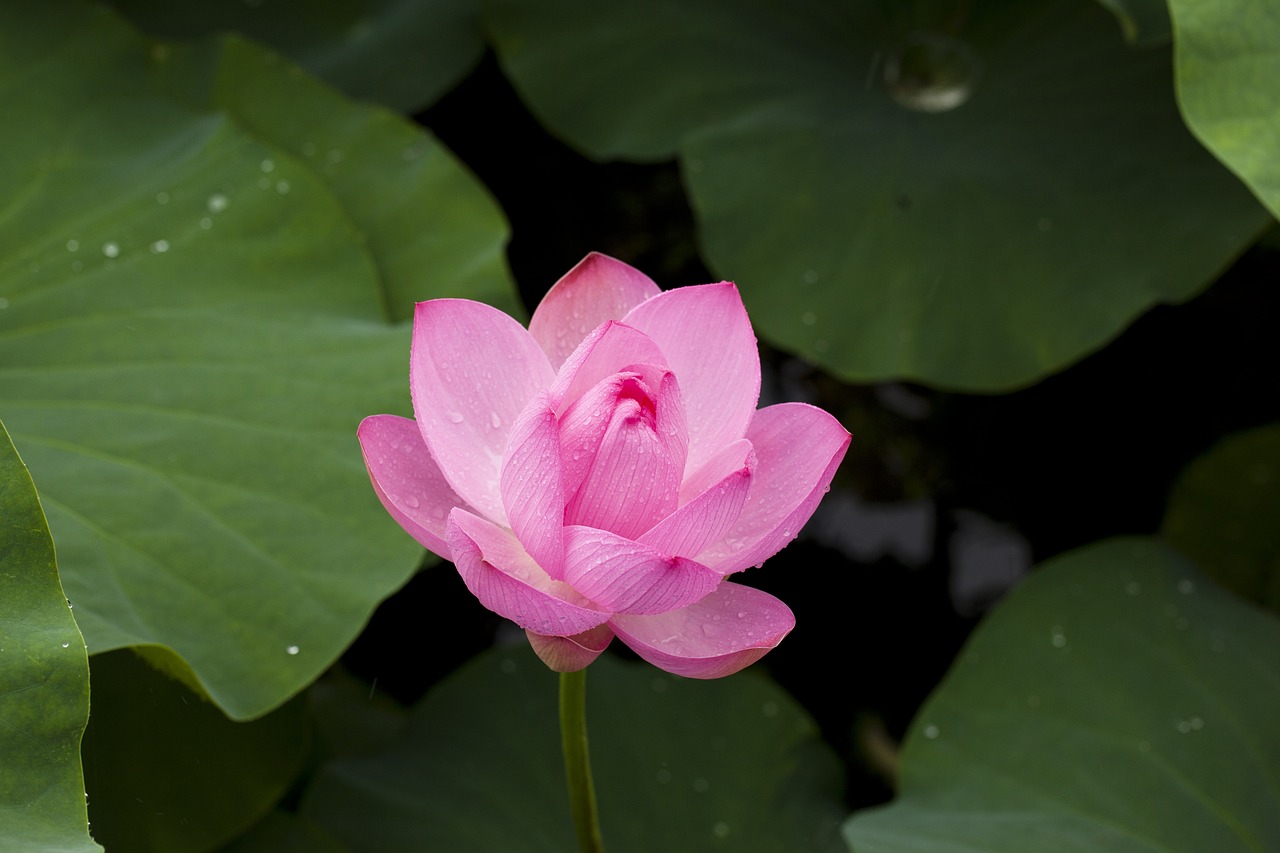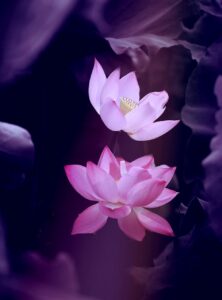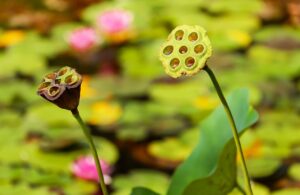Red lotus (Nymphaea pubescens)
Overview
The Nymphaea pubescens, also known as the hairy water lily, is an aquatic plant with distinct floaty round leaves and erect perennial rhizomes. However, details on effects, smoking usage, and user experiences are limited, signaling the need for more research on its properties.
Common name(s): Hairy water lily, Pink water lily.
Scientific name: Nymphaea pubescens Willd.

Characteristics
Known for its hairy leaves, round floating and heart-shaped submerged leaves, and ability to thrive in freshwater environments.
Region
It is native to South and Southeast Asia.
Natural Habitat
The Red Lotus is typically found in the shallow, still freshwaters of ponds and swamps.
Cultivation
Requires full sunlight, abundant stagnant or slow-moving water, and rich loamy or silty soil.
Traditional Usage
The Red Lotus has a history of traditional use across various cultures, though the specifics are not well-documented. These plants are primarily known for their ornamental value, as they add beauty to aquatic settings with their vibrant blooms. Here are some of the traditional ways the Red Lotus might have been utilized:
- Enhancing the aesthetic appeal of ponds and water gardens.
- Potentially being used as a herbal remedy as part of broader holistic practices, taking advantage of the plant’s natural compounds.
- Contributing to various cultural and religious ceremonies, where water lilies often hold symbolic significance.
It’s important to mention that while the Red Lotus is part of a database for medicinal plants, explicit medicinal benefits are not provided for this species. Always consult with a healthcare professional before exploring the Red Lotus or similar species for their potential soothing or psychoactive properties.
Historical Usage
Appreciated historically for ornamental beauty and potential medicinal properties.
Common Usage
Primarily utilized as an ornamental plant in water gardens and ponds.
Effects
Red Lotus, an aquatic plant, is known for its distinctive features and potential medicinal uses. Usually seen floating elegantly on water surfaces, it holds a special place in various traditions. While specific effects when consumed or applied vary, the plant’s close relatives in the Nymphaeaceae family are celebrated for several key benefits.
Commonly attributed effects include:
- Creating a soothing sensation due to mild psychoactive properties
- Being part of traditional remedies, hinting at its diverse applications
- Having potential for ornamental use due to its aesthetic appeal
The plant’s profile suggests a blend of ingredients like flavonoids, alkaloids, and polysaccharides, compounds found in similar species and connected with health benefits. It’s worth mentioning, though, that direct information on the effects of Red Lotus is sparse and largely unverified.
Without specific user experiences and dosage recommendations, it’s important to approach its use with caution. Whether you’re looking at its traditional significance or exploring contemporary uses, consulting healthcare professionals is recommended to ensure safety and maximize potential benefits.

The red lotus is celebrated for its soothing qualities and is utilized in traditional medicine to promote relaxation and well-being.
Effects when smoking
The effects when smoking the Red Lotus herb have not been extensively studied, and detailed information specifically about this plant is scarce. However, in general, water lilies like Red Lotus are often appreciated for their calming properties. Here’s a summary of the potential effects based on the available information about similar water lily species:
- Soothing sensations that may help alleviate stress
- Mild psychoactive effects, possibly contributing to feelings of relaxation
- Anecdotally, some users report a sense of mild euphoria
- Potential enhancement of visual perceptions
Flavor Profile
Not documented.
Edible Parts
This plant is not known to be edible.
Effects when Smoked
Effects of smoking are not detailed; water lilies are generally recognized for calming and mild psychoactive effects.
User Experiences
User experiences are not documented in the provided information.
Medicinal Benefits
Red lotus, also known as the hairy water lily, may not have a well-documented history of medicinal benefits, but it’s part of a family recognized for therapeutic uses. This association suggests potential health benefits that could be explored. Understanding its relation to other species in the Nymphaeaceae family, these are some of the medicinal advantages that might be considered:
- Containing flavonoids, red lotus might offer antioxidant benefits that can help to protect the body from oxidative stress.
- Alkaloids present in the plant could provide soothing effects, potentially aiding in relaxation and stress relief.
- Polysaccharides, another possible compound, may support the immune system and promote overall well-being.
Remember, while exploring the medicinal uses of red lotus through smoking or other methods, consulting with a healthcare professional is crucial, as well as being mindful of possible health risks and legal regulations in your area.
History and Folklore
The Red Lotus has a rich tapestry of historical use across various cultures. These elegant aquatic plants held significance not only for their ornamental beauty but also for their potential medicinal properties. Historically, cultures have looked to the Red Lotus for its soothing qualities, and it may have been utilized in traditional herbal practices. As with many natural elements, different parts of the Red Lotus were selectively used to harness reputed health benefits, aligning with the holistic approaches of bygone eras. The details of these applications remain elusive without specific historical documentation.1 2
However, like other members of the water lily family, the Red Lotus likely played a role within the context of ancient wellness and ritual.

The Red Lotus: An Emblem of Healing and Tradition in Ancient Cultures
Side Effects and Contraindications
- Side Effects: Specific side effects of Nymphaea pubescens are not widely reported. However, caution should always be exercised as individual reactions can vary. Potential side effects may resemble those of related water lily species, such as nausea or allergic reactions. If any adverse reactions occur, discontinue use immediately.
- Contraindications: There is no comprehensive list of contraindications. Still, as with all herbs, it should not be used by individuals with known hypersensitivity to its components. Additionally, pregnant or breastfeeding women are generally advised to avoid use due to a lack of safety information. Nymphaea pubescens may interact with other medications; a healthcare provider should be consulted before use.
Legal Status
The legal status of Red Lotus currently lacks specific classifications, but users should be diligent as regulations can differ significantly by country and region.
Before using or possessing Red Lotus, it is critical to consult local laws to ensure compliance. Without direct references to legality, you must take steps to verify its status, as herbal plants and their uses may be subject to legal controls or restrictions in your area.
References
1. “Nelumbo nucifera – Wikipedia.” Wikipedia, https://en.wikipedia.org/wiki/Nelumbo_nucifera
2. “Nymphaea pubescens Willd. – Plants of the World Online.” Kew Science, https://powo.science.kew.org/taxon/urn:lsid:ipni.org:names:605673-1
5. “Nymphaea pubescens – Wikipedia.” Wikipedia, https://en.wikipedia.org/wiki/Nymphaea_pubescens
Nicolas Duval
Nicolas is a passionate advocate for nature and the art of wildcrafting. His dedication shines through in Wildcraftia, a website he meticulously crafted to serve as a haven for nature enthusiasts worldwide. Driven by a deep appreciation for nature’s connection to humanity, Nicolas embarked on his journey in 2011 with SmokableHerbs, a platform showcasing his love for nature’s bounty. Building upon this foundation, he established Smokably, a thriving online store offering premium herbs and blends to a global audience.
